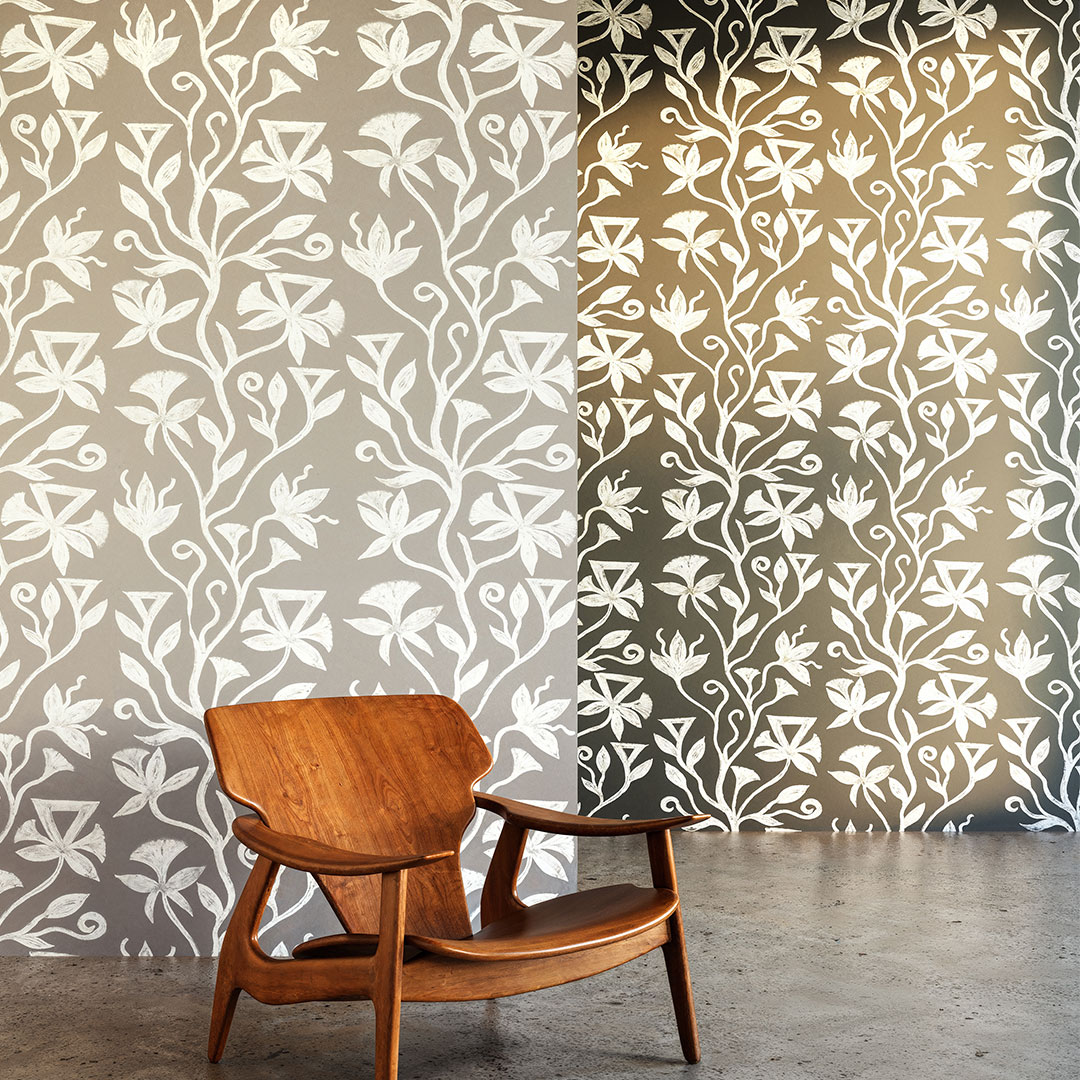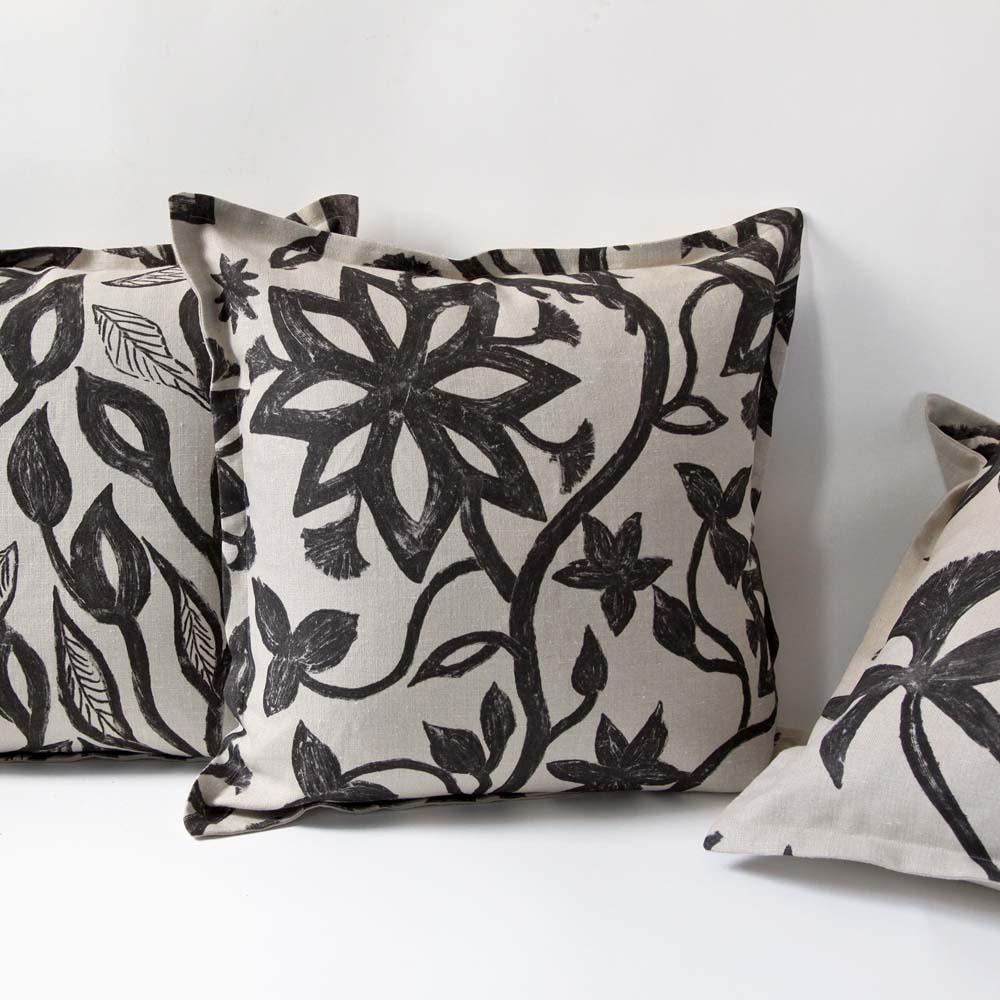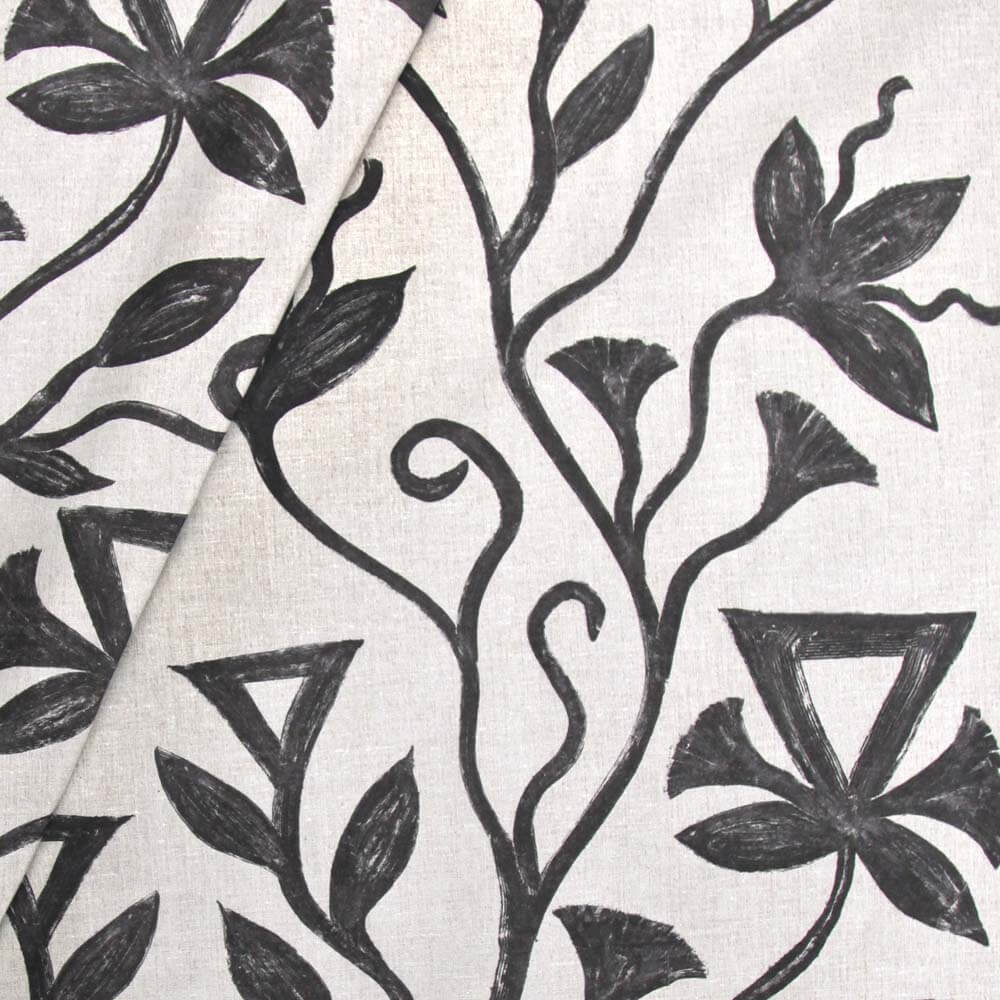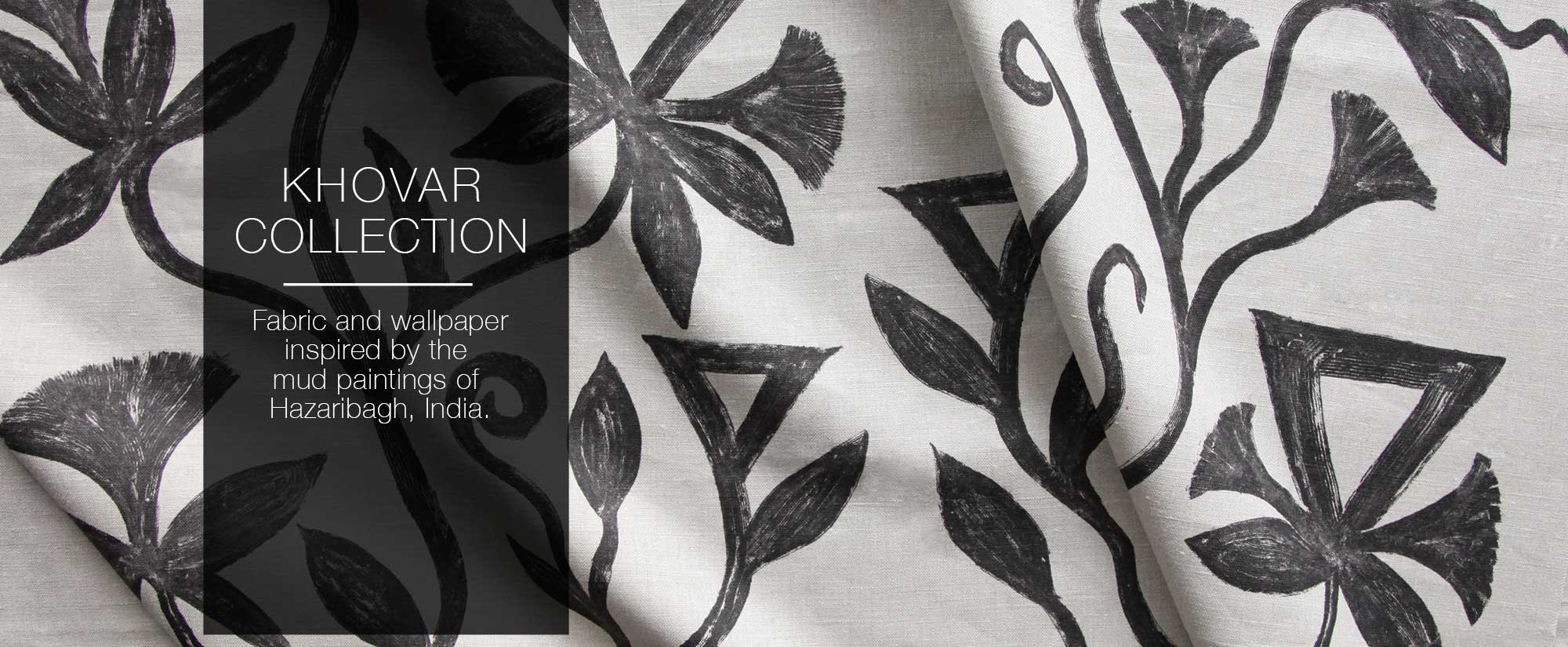
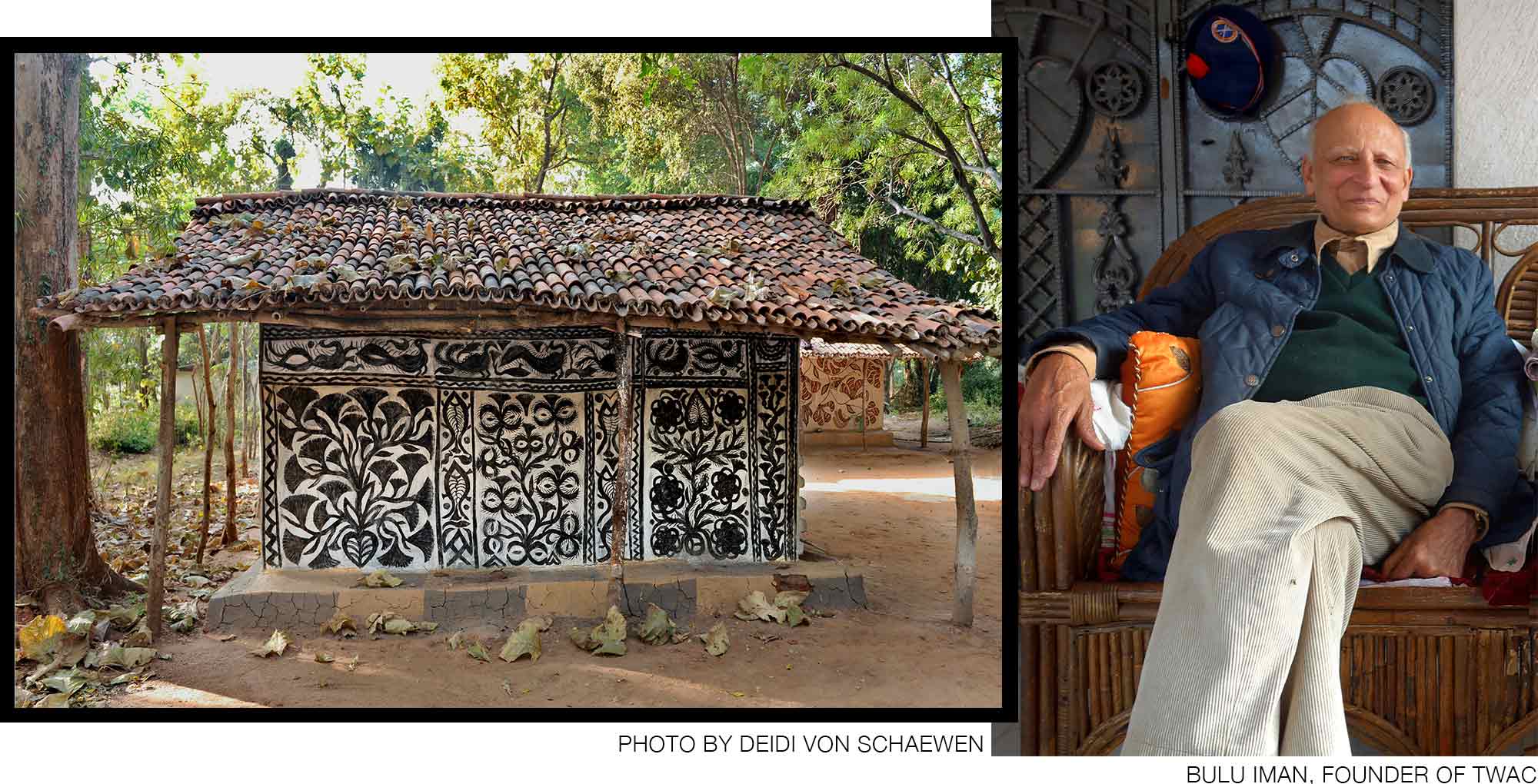
In the tribal villages of Hazaribagh, northeastern India, Adivasi women continue an ancient tradition, painting their mud homes with expansive, figurative murals. This matrimonial ritual, held each spring, results in paintings that last until the summer monsoons wash them away. This fleeting nature—intentional impermanence—carries both profound beauty and deep meaning, passed down through generations.
We first encountered these Khovar paintings in the pages of World of Interiors, in an article showcasing the work of Deidi von Schaewen, a German-French photographer who documented life in these villages. Through Deidi’s work and the magazine, we connected with Bulu Imam, a dedicated environmentalist and recipient of the Gandhi International Peace Award UK, who has spent decades preserving Adivasi traditions.
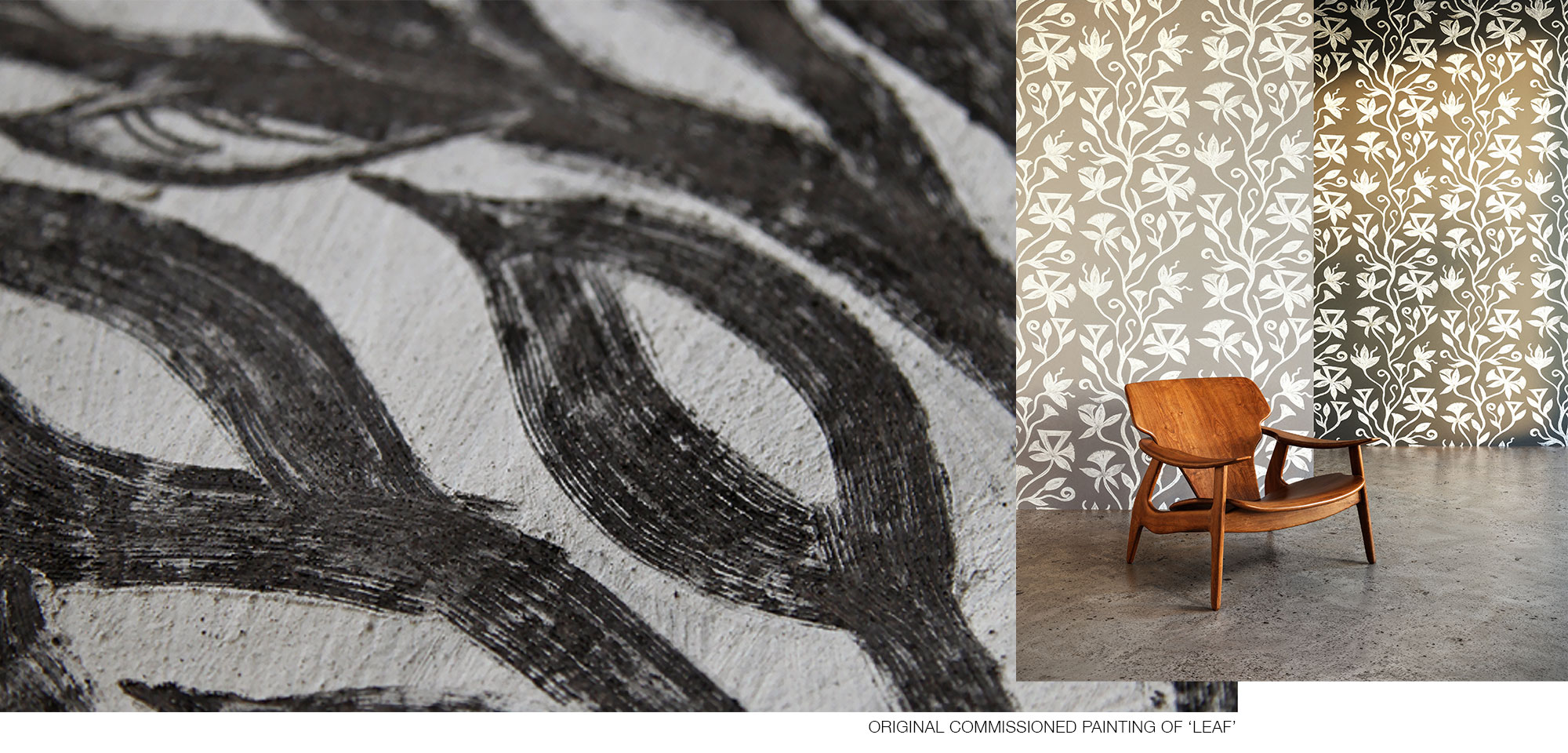
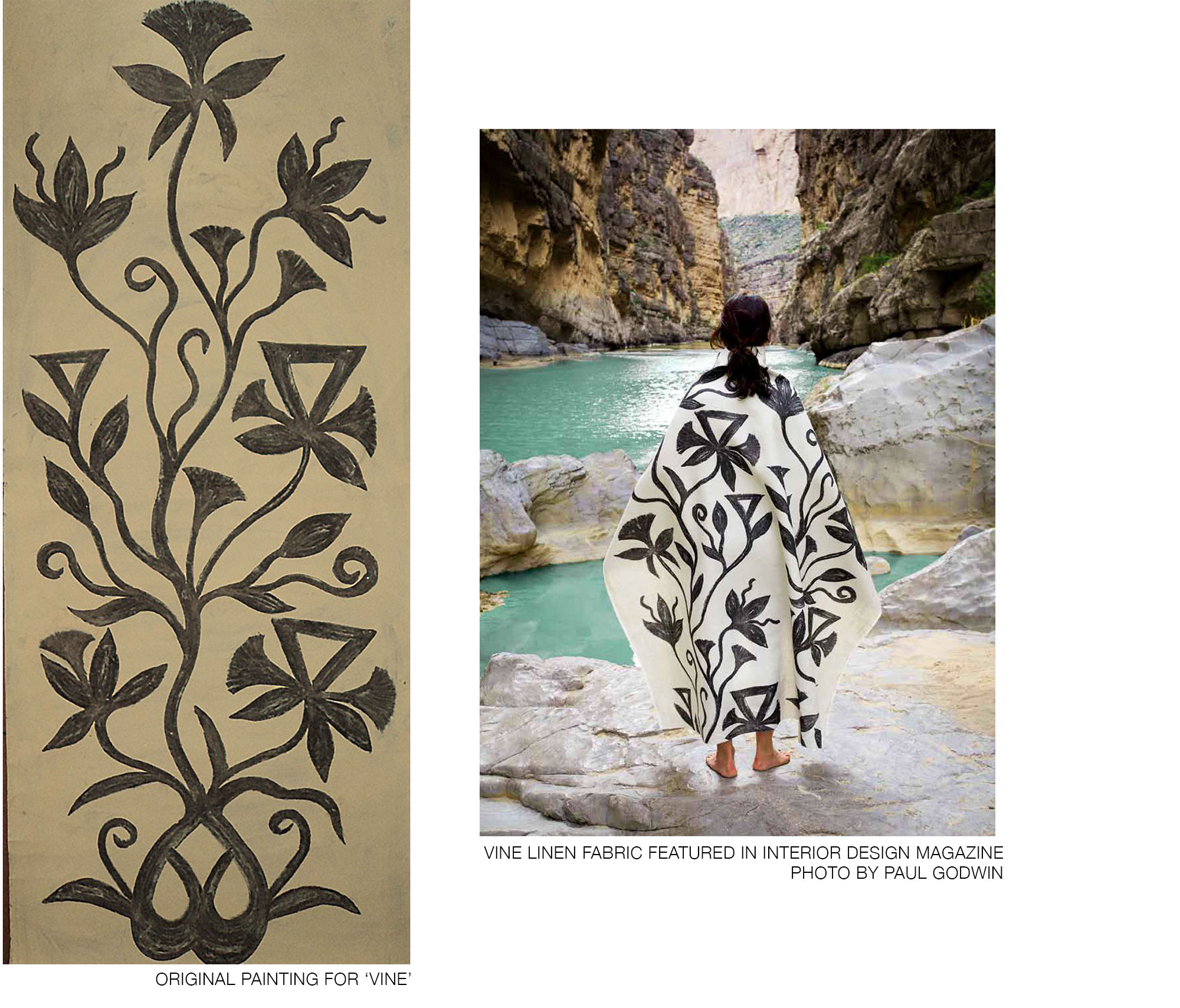
In the 1990s, while working to protect Mesolithic rock art in the North Karanpura Valley, Bulu discovered a link between prehistoric paintings and the Adivasi women’s ritualistic murals. In response, he founded the Tribal Women’s Artists Cooperative (TWAC) to keep these ancient practices alive.
Inspired by the scale and boldness of these designs, we partnered with Bulu Imam and TWAC to commission a series of custom artworks, which we then adapted for printing on heavyweight natural linen and clay-coated wallpaper, preserving the original murals’ scale and integrity.
The Khovar Collection has evolved over time, now featuring new colorways inspired by the rich, earthen tones of the region’s natural clays, each imbued with cultural meaning. In the local language, “mati” means clay. Charak Mati is a soft, creamy white that symbolizes purity and light. Kali Mati, a deep black, represents grounding and stability, while Pili Mati, a warm clay tone, reflects the nurturing energy of the land and symbolizes life and growth. These additions honor the original tradition while expanding the collection’s versatility.
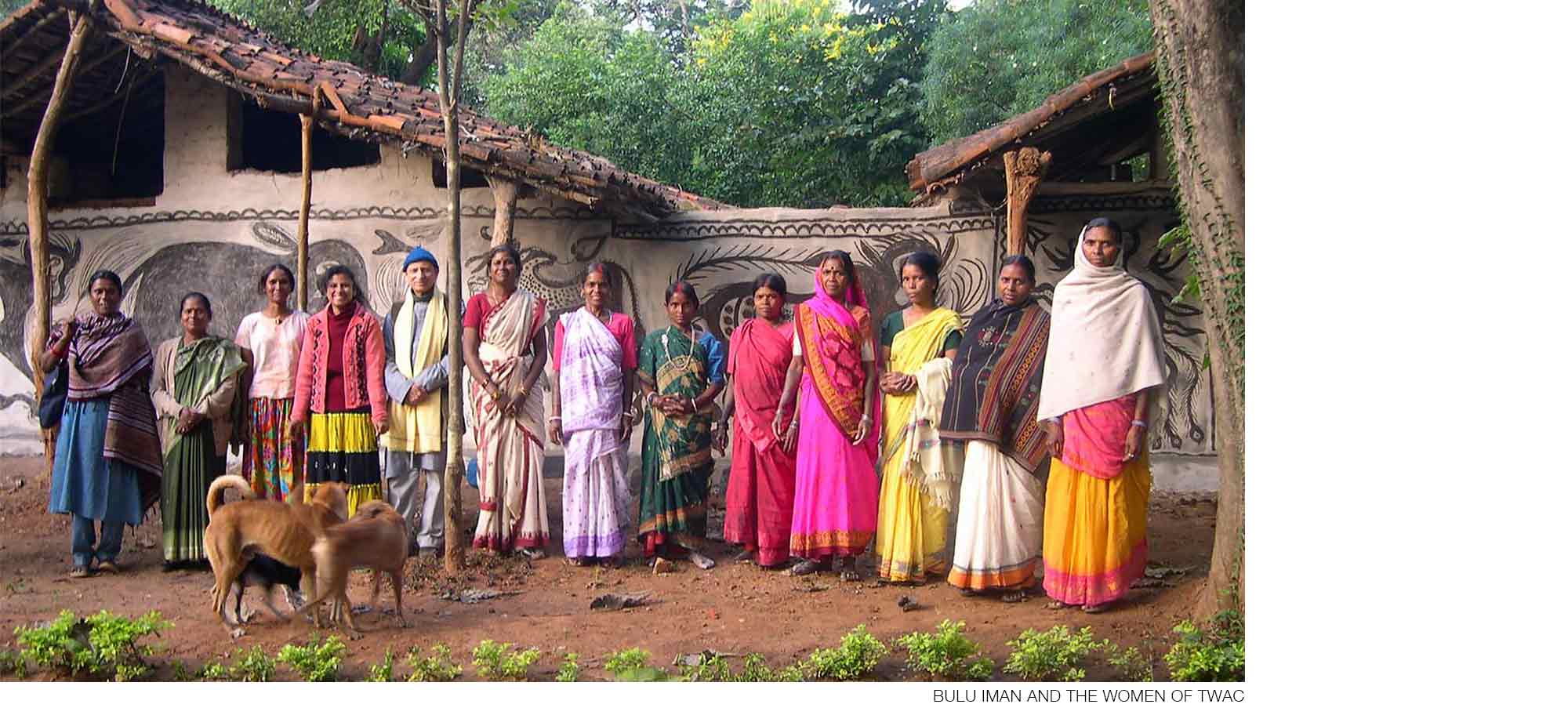
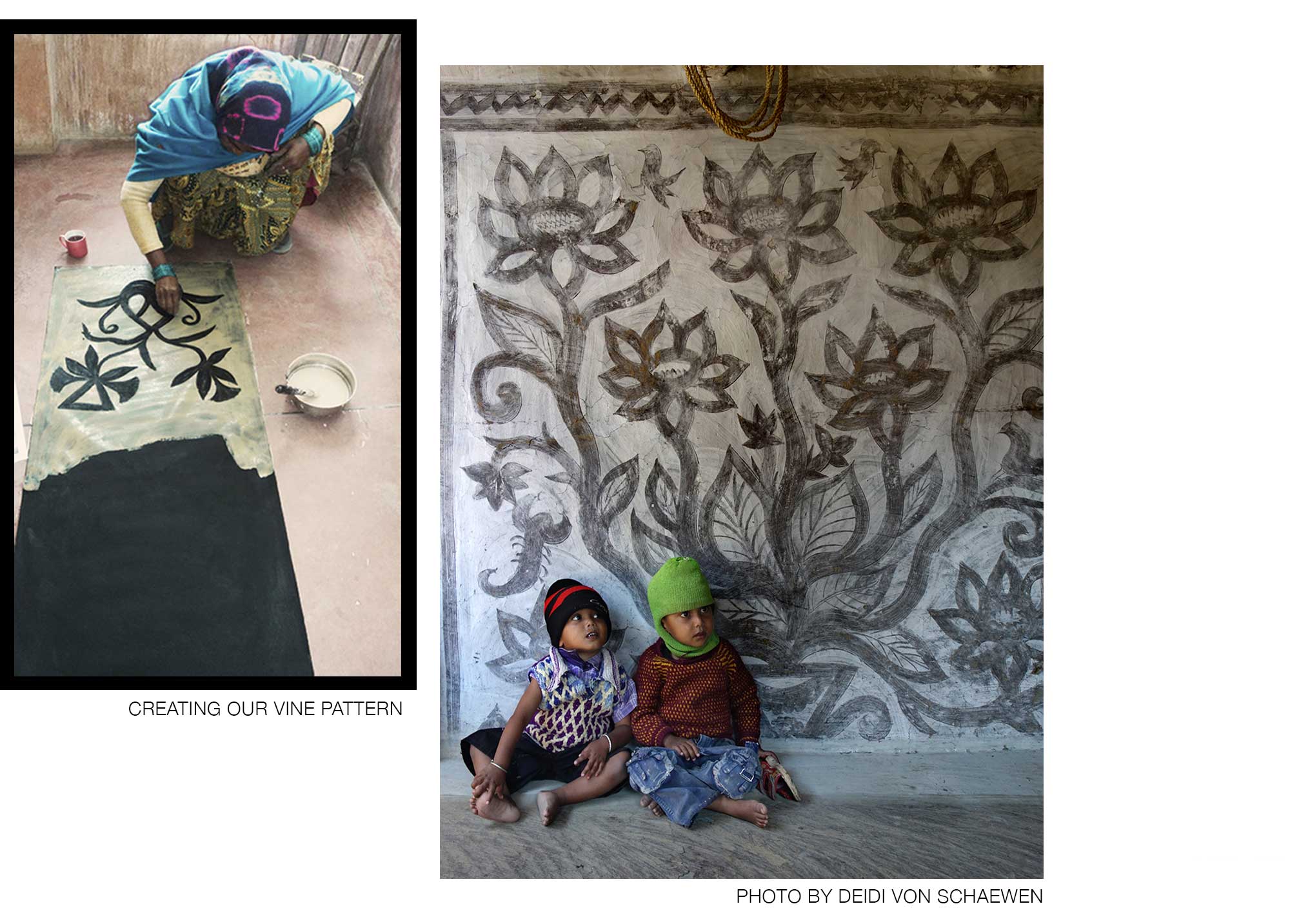
Today, only a few villages continue the Khovar tradition, as deforestation, mining, and a lack of protection threaten its survival. Working closely with Bulu Imam and TWAC, we recognize the urgency of preserving this practice. For each yard of fabric and wallpaper sold, TWAC receives a royalty, ensuring that the women of Hazaribagh directly benefit from their craft.
Tied to its origins, the Khovar Collection creates a lasting connection between the Adivasi women and those who value their work, allowing their artistry to be appreciated by a broader audience.

